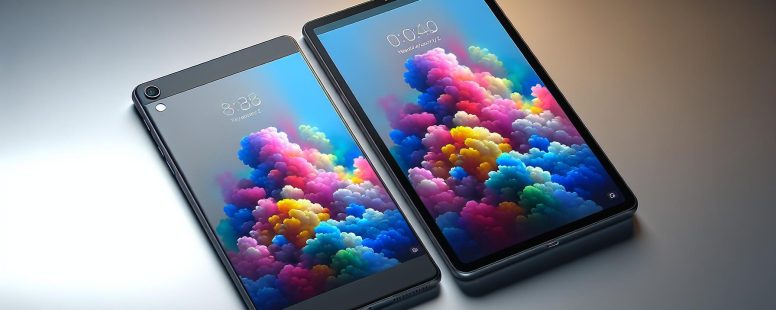Difference Between 9th and 10th Generation iPad: A Comprehensive Guide
Imagine holding the sleek, polished body of Apple’s latest iPad in your hands, feeling the cool aluminum against your fingertips. You might wonder, “Is this 10th generation iPad really that different from the 9th?” It’s not just about the aesthetics; the differences run deeper, from performance enhancements to subtle design tweaks.
Whether you’re a tech enthusiast or a casual user, understanding these distinctions can help you make an well-informed choice. Jump into the nuances between these two generations, and discover which one truly fits your needs. Get ready to uncover the hidden gems and standout features that set the 9th and 10th generation iPads apart.
Design and Build Quality
When comparing the 9th and 10th generation iPads, design and build quality are prominent aspects to consider. Made with precision, each generation reflects Apple’s commitment to innovation and attention to detail.
Dimensions and Weight
The 9th generation iPad measures 9.8 x 6.8 x 0.29 inches and weighs around 1.09 pounds for Wi-Fi models and slightly more for cellular versions. The 10th generation iPad, but, features a more compact form at 9.87 x 7.03 x 0.28 inches and weighs approximately 1.07 pounds for Wi-Fi models.
Material and Colors
Apple used high-quality aluminum for both generations, ensuring durability and a premium feel. The 9th generation iPad comes in two colors: Space Gray and Silver. The 10th generation iPad offers a wider palette, with Silver, Pink, Blue, and Yellow, catering to more personal preferences.
Display Differences
When comparing the 9th and 10th generation iPads, the display shows significant variations. Let’s jump into this aspect with two specific areas of focus: screen size and resolution, and refresh rate and brightness.
Screen Size and Resolution
The 9th generation iPad features a 10.2-inch Retina display with a resolution of 2160 x 1620 pixels. If you’re someone who values screen clarity, this size offers ample real estate for viewing documents, videos, and apps. On the other hand, the 10th generation iPad steps up the game with a sizable 10.9-inch Liquid Retina display, boasting a resolution of 2360 x 1640 pixels. The larger screen definitely enhances your viewing experience, whether you’re streaming a movie or working on a project.
An example of this improvement can be seen in the color accuracy. While both displays support True Tone technology, providing a more natural viewing experience, the 10th generation iPad’s display offers a P3 wide color gamut. This means your photos and videos will look more vibrant and true to life. Imagine comparing the two screens side-by-side; the 10th generation’s screen would showcase richer colors and sharper text.
Refresh Rate and Brightness
About refresh rate, both generations maintain a standard 60Hz refresh rate, which is quite sufficient for most daily tasks. But, if you’re looking for smoother animations and scrolling, you’d notice the difference in higher-end models like the iPad Pro.
Brightness is yet another area where the 10th generation iPad takes a slight lead. The 9th generation iPad offers 500 nits of brightness. In contrast, the 10th generation ups it to 600 nits, making it much better suited for outdoor use or brightly lit environments. Have you ever tried using your device under direct sunlight only to find the screen too dim? The increased brightness in the 10th generation can help mitigate that issue.
To sum it up, if screen size, resolution, and brightness are critical to you, the 10th generation iPad offers clear advantages. The differences, though subtle, can make a significant impact on your overall user experience.
Performance and Hardware
Processor and RAM
When examining the performance of the 9th and 10th generation iPads, you’ll find significant differences reflecting Apple’s commitment to continuous improvement. The 9th generation iPad comes equipped with the A13 Bionic chip, which includes a 6-core CPU and a 4-core GPU. This combination provides sufficient power for everyday tasks, from browsing the web to playing casual games.
In contrast, the 10th generation iPad features the A14 Bionic chip, which boasts a 6-core CPU and a 4-core GPU as well. But, it’s built on a 5-nanometer process, making it more efficient and capable of handling more demanding applications. The enhanced Neural Engine in the A14 chip boosts machine learning capabilities, allowing for smoother interactions with augmented reality and other AI-driven features.
About RAM, the 9th generation iPad includes 3GB, providing enough memory for multitasking and running iPadOS smoothly. The 10th generation, on the other hand, packs 4GB of RAM, offering a slight edge in performance, especially when using multiple apps simultaneously or engaging in resource-intensive activities like video editing.
Battery Life and Charging
Both iPads offer impressive battery life, ensuring you stay connected and productive throughout the day. The 9th generation iPad delivers up to 10 hours of web surfing on Wi-Fi or watching videos, thanks to its 32.4-watt-hour battery. It’s adequate for a day of casual use, such as reading, streaming, or light gaming.
The 10th generation iPad also promises up to 10 hours of battery life for similar activities, powered by its slightly smaller 28.6-watt-hour battery. Even though the smaller battery capacity, the more efficient A14 Bionic chip helps balance power consumption, allowing it to match the endurance of its predecessor.
Charging methods differ between the generations. The 9th generation uses a Lightning connector, a familiar choice for many Apple devices. Meanwhile, the 10th generation embraces USB-C, offering a more versatile and faster charging solution. USB-C not only speeds up charging times but also enhances connectivity options, making it more suitable for users who need to connect to various peripherals and external displays.
In essence, while both iPads share similar battery performance, the 10th generation’s use of the A14 chip and USB-C provides an edge in efficiency and versatility, catering to power users and creative professionals alike.
Software and Features
Operating System
Both the 9th and 10th generation iPads run on iPadOS, but the 10th generation benefits from the latest updates. The 9th generation launched with iPadOS 15, whereas the 10th generation comes with iPadOS 16. This operating system adds features such as improved multitasking, widgets on the home screen, and enhanced note-taking capabilities, making the 10th generation iPad’s software experience more seamless and versatile.
Unique Features
The 10th generation iPad introduces several unique features that set it apart. For instance, the Center Stage technology in the front camera keeps you in frame during video calls, a convenience the 9th generation lacks. The 10th generation also supports the second-generation Apple Pencil, which attaches magnetically and charges wirelessly, offering a more efficient workflow for artists and note-takers. Also, the support for 5G connectivity in the 10th generation ensures faster and more reliable internet access, crucial for on-the-go professionals.
These advancements underline how Apple continues to enhance the user experience with each iteration, ensuring you have access to cutting-edge technology and features.
Camera and Audio
Camera and audio features on the 9th and 10th generation iPads offer noticeable differences that can influence your choice.
Camera Specifications
The 9th generation iPad features an 8MP rear camera and a 1.2MP FaceTime HD front camera. These specifications are sufficient for everyday photography, video calls, and scanning documents. But, if you’re looking to capture more detailed shots or high-quality videos, a more advanced setup is preferable.
On the other hand, the 10th generation iPad elevates your photography experience with a 12MP rear camera. This enhancement improves image clarity and color accuracy, making it suitable for both personal and professional use. Also, the front camera is upgraded to a 12MP Ultra-Wide lens, offering a 122-degree field of view. This feature, combined with the Center Stage technology, ensures you remain in the frame during video calls even if you move around, providing a more immersive and dynamic user experience.
Audio Enhancements
Audio quality is another area where the two generations differ. The 9th generation iPad includes stereo speakers positioned at the bottom. While the sound quality is decent for casual media consumption, it might not deliver the immersive experience some users seek for gaming or watching movies.
Contrastingly, the 10th generation iPad delivers an enhanced audio experience. It features world stereo speakers, providing a more balanced sound distribution. This improvement is particularly noticeable when watching videos in world mode, offering a richer and more engaging audio experience.
Summarising, both the camera and audio enhancements in the 10th generation iPad provide significant upgrades over the 9th generation, catering to those who prioritize high-quality media experiences.
Storage Options
Choosing the right storage capacity can significantly impact your iPad experience. The 9th and 10th generation iPads offer different options to match a variety of user needs.
Available Capacities
The 9th generation iPad comes with two storage options: 64GB and 256GB. These capacities can suit everyday tasks like browsing and streaming or more intensive activities like downloading large apps and storing high-resolution photos. On the other hand, the 10th generation iPad expands these choices, offering 64GB, 128GB, and 512GB options. This range caters to power users and creative professionals who require ample space for graphic design, video editing, and extensive media libraries.
Both generations employ Apple’s fast solid-state storage technology, ensuring quick access and reliability. But, if you frequently use storage-hungry apps or save large files, the 10th generation’s larger capacity options might better meet your needs.
Pricing Differences
Storage capacity has a direct impact on pricing. A 64GB 9th generation iPad is the most budget-friendly option, making it attractive for students and average users. If you opt for the 256GB version, you will see a noticeable price hike, reflecting the increased storage.
The 10th generation iPad, while improving features and capacities, also has higher starting and incremental prices. A 64GB model is costlier than its 9th generation counterpart. As storage increases to 128GB and 512GB, the price gap widens even more, positioning the 10th generation as a premium choice.
When deciding which iPad to purchase, consider how you plan to use it. If you need additional storage and more advanced features, the 10th generation offers clear advantages even though the higher cost. But for general use with moderate storage needs, the 9th generation provides excellent value. Both models maintain the quality and performance Apple users expect, ensuring you get the best return on investment depending on your specific requirements.
Conclusion
Choosing between the 9th and 10th generation iPads eventually boils down to your specific needs and preferences. If you’re looking for a budget-friendly option that still offers solid performance and essential features, the 9th generation iPad is a strong contender. But, if you prioritize enhanced display quality, better performance, and additional features like 5G connectivity and improved cameras, the 10th generation iPad is worth the investment.
Whether you’re a casual user or a tech enthusiast, understanding these differences ensures you make an well-informed choice. Both iPads uphold Apple’s reputation for quality and innovation, so you can’t go wrong with either choice.
- Which Is Better Omeprazole or Pantoprazole? A Complete Comparison Guide - December 18, 2025
- Difference Between Snapchat Spotlight and TikTok Feeds - December 17, 2025
- Which Is Better Olipop or Poppi? Comparing Taste, Benefits & Ingredients for Gut Health - December 17, 2025







